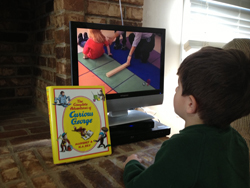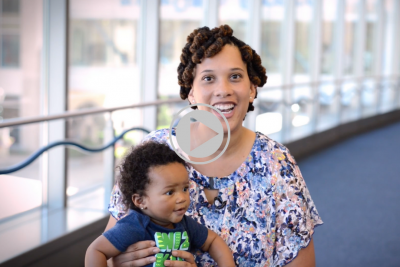It’s that time of year again! Our favorite creature comforts are pumpkin flavored and apple-cinnamon scented. The boots, scarves, and soft sweaters are back in wardrobe rotation. Soon our children will be in and out of school for the various holiday breaks. As a working mother of four, I look forward to the time that I get to spend with my children during their school breaks. Even though the time is short, it is more enriching due to the reduced school and work demands. Although holidays breaks may be expected and welcomed changes in our daily lives, they can be disruptive if we don’t maintain some routine. As you and your family head into the upcoming school breaks, consider the following tips to help structure the time off and ease the transitions back to school:
Keep Up with the Bedtime Routine
Children need a certain amount of sleep at night, which remains the same on school nights, weekends, and holidays. Although there may be no school bus to catch in the morning while on break, there is still plenty of reason for children to rise at the same or similar time. Adequate sleep helps your child to regulate their attention, memory, mood, and behavior. One good way to maintain bedtime and wake time routines is to set the expectation early. Let your child know that bedtimes will remain the same during the break but ensure them they will still have fun and relaxation during the day. Maintain a bedtime routine that is similar to school days. Although they may not need to prepare their backpacks or school outfits, they can still complete many of the same nighttime routine and keep up their sleep hygiene, such as:
-
- Bath time and brushing teeth
- Changing into pajamas
- Sleeping in the same bed/room
- Turning off electronics at least one hour before bedtime
- Other typical bedtime habits (i.e., bedtime stories, using the restroom, prayers, etc.)
Set Expectations and Make Them Visual
Children can better meet expectations when they know what to expect and what is expected. One way to set expectations is to post them in the home via colorful and child-friendly (think stickers and crayons) schedules and lists (i.e., rules, chores, etc.). Additional tips for making child-friendly visuals:
-
- Place them somewhere the child spends the most time.
- Decorate them with your child’s favorite characters or colors. Enlist their help!
- If your child is still learning to read, use pictures (i.e., toothbrush, draw an apple to indicate meals, television for screen time, tree for outside time, etc.).
Plan Ahead for Homework/School Projects
If you have older children like mine, they may enter their school break with homework, extra credit, or projects. My teenagers sometimes underestimate the amount of time that will be needed to complete longer assignments, which leads to the dreaded “Oh no, Mom, it’s due tomorrow!” You can help your child (and yourself) by asking about all projects and homework that they may need to complete over the break, along with due dates. Help your child plan when they can work on the assignment(s) during vacation time. Check up on their progress, show your interest, and offer to help.
Physical Activity
Part of your child’s school day often includes physical education, recess, and other opportunities for movement. This physical activity plays a role in a child’s ability to pay attention, listen and sleep well. Be sure to include physical activity in your child’s day when they are on break from school, such as playing outside, riding bikes, or going on walks. These are also great opportunities for quality time with your child and even sneak in some learning. I like to take my younger ones on walks to collect pinecones and different color leaves in the neighborhood. My teenagers can be a little harder to get moving. I try to work in their interests, such as inviting my competitive son for a race down the block.
Back-to-School Transition
The transition back to school (and work!) can bring mixed feelings. To help cope with the back-to-school jitters, help your children focus on the positive, like seeing friends and telling their teacher about their break. Here are more tips to demarcate the end of the break period:
-
- Mark the first day back to school on a household calendar for a visible countdown.
- Look at pictures from the break and talk about fond memories made.
- For younger children, have them draw a picture to show their teacher.
- For older children, help them prepare for any assignments that may be due.
- Make positive comments about the time spent together.
- Model preparedness and eagerness for the return to school routines.
Rules and routines during school breaks may sound restrictive. However, keeping home-life consistent and predictable will help your child (and you!) enjoy the holidays and the transition back to school.






Comments